Inland waters
Type of resources
Available actions
Topics
Keywords
Contact for the resource
Provided by
Representation types
Update frequencies
status
-

Results of circumpolar assessment of river diatoms, indicating (a) the location of river diatom stations, underlain by circumpolar ecoregions; (b) ecoregions with many river diatom stations, colored on the basis of alpha diversity rarefied to 40 stations; (c) all ecoregions with river diatom stations, colored on the basis of alpha diversity rarefied to 10 stations; (d) ecoregions with at least two stations in a hydrobasin, colored on the basis of the dominant component of beta diversity (species turnover, nestedness, approximately equal contribution, or no diversity) when averaged across hydrobasins in each ecoregion. State of the Arctic Freshwater Biodiversity Report - Chapter 4 - Page 36 - Figure 4-8
-
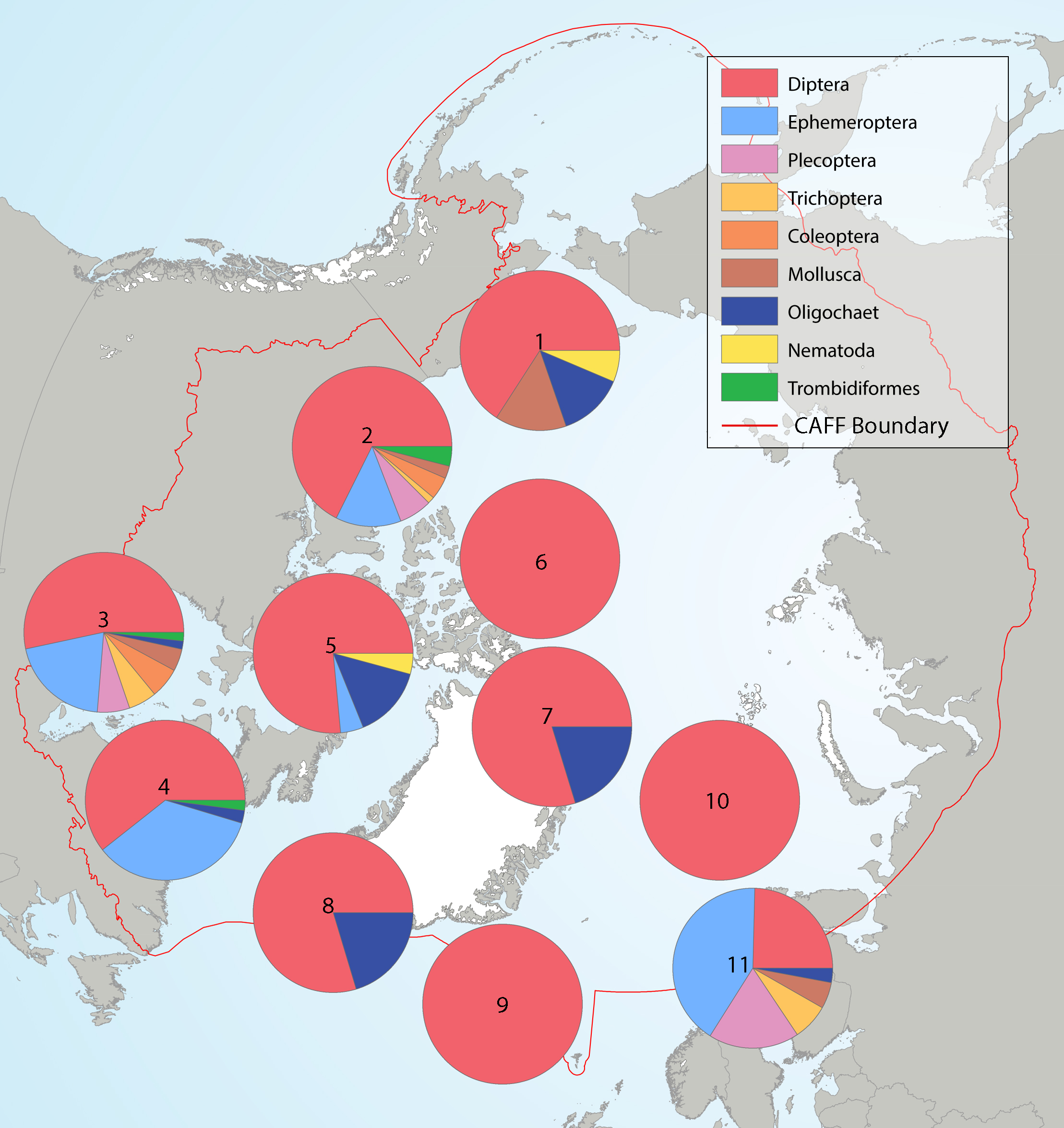
Summary of the taxa accounting for 85% of the river benthic macroinvertebrates collected in each of several highly-sampled geographic areas, with taxa grouped by order level or higher in pie charts placed spatially to indicate sampling area. Pie charts correspond to (1) Alaska, (2) western Canada, (3) southern Canada, south of Hudson Bay, (4) northern Labrador, (5) Baffin Island, (6) Ellesmere Island, (7) Greenland high Arctic, (8) Greenland low Arctic, (9) Iceland, (10) Svalbard, and (11) Fennoscandia. State of the Arctic Freshwater Biodiversity Report - Chapter 4 - Page 70 - Figure 4-34
-
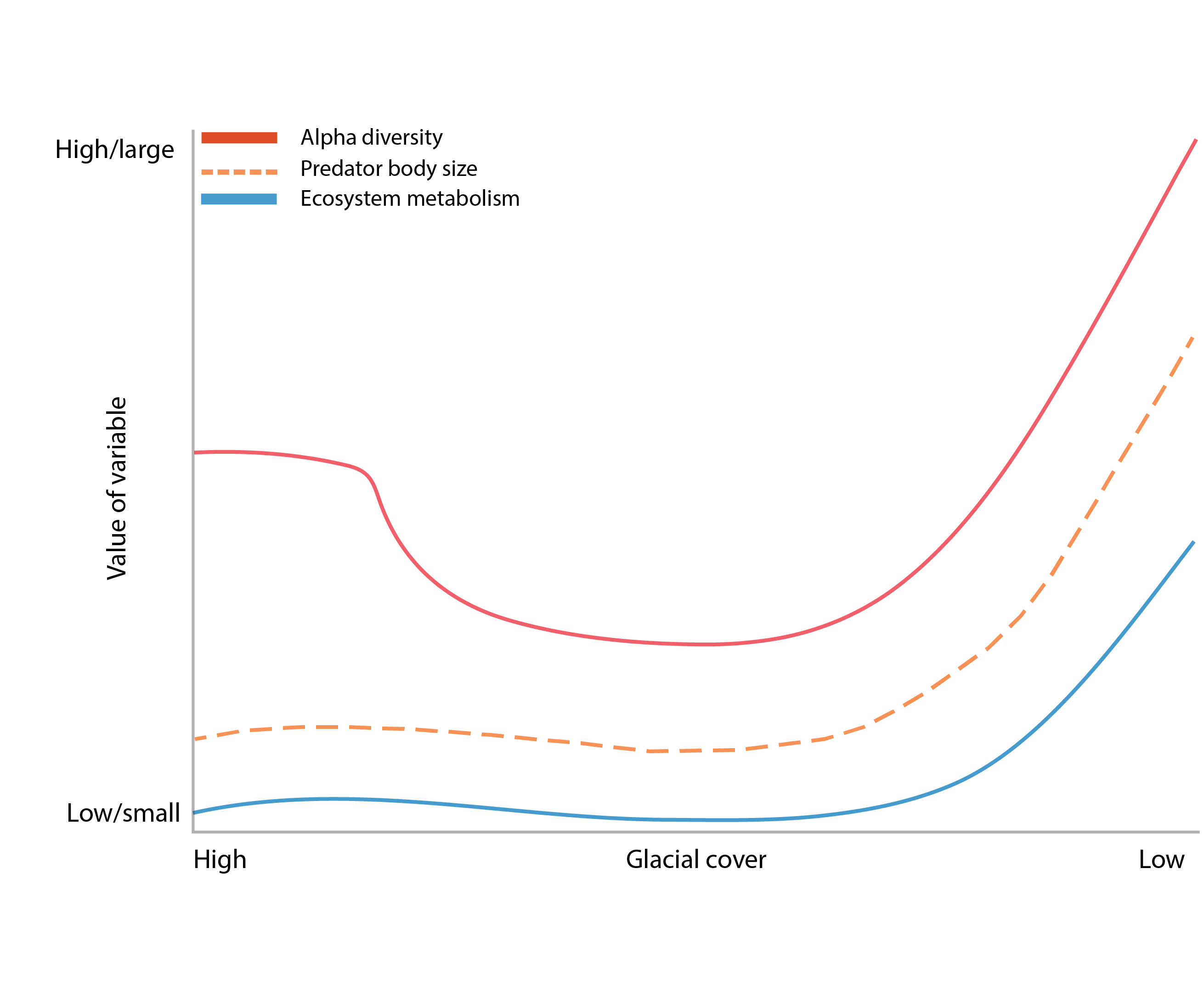
Figure 3-5 Changes in alpha diversity (red line), predator body size (blue dashed line), and ecosystem metabolism (blue solid line) with a shift in glacial cover from high (left) to low (right). Redrawn from Milner et al. (2017). State of the Arctic Freshwater Biodiversity Report - Chapter 3 - Page 22 - Figure 3-5
-
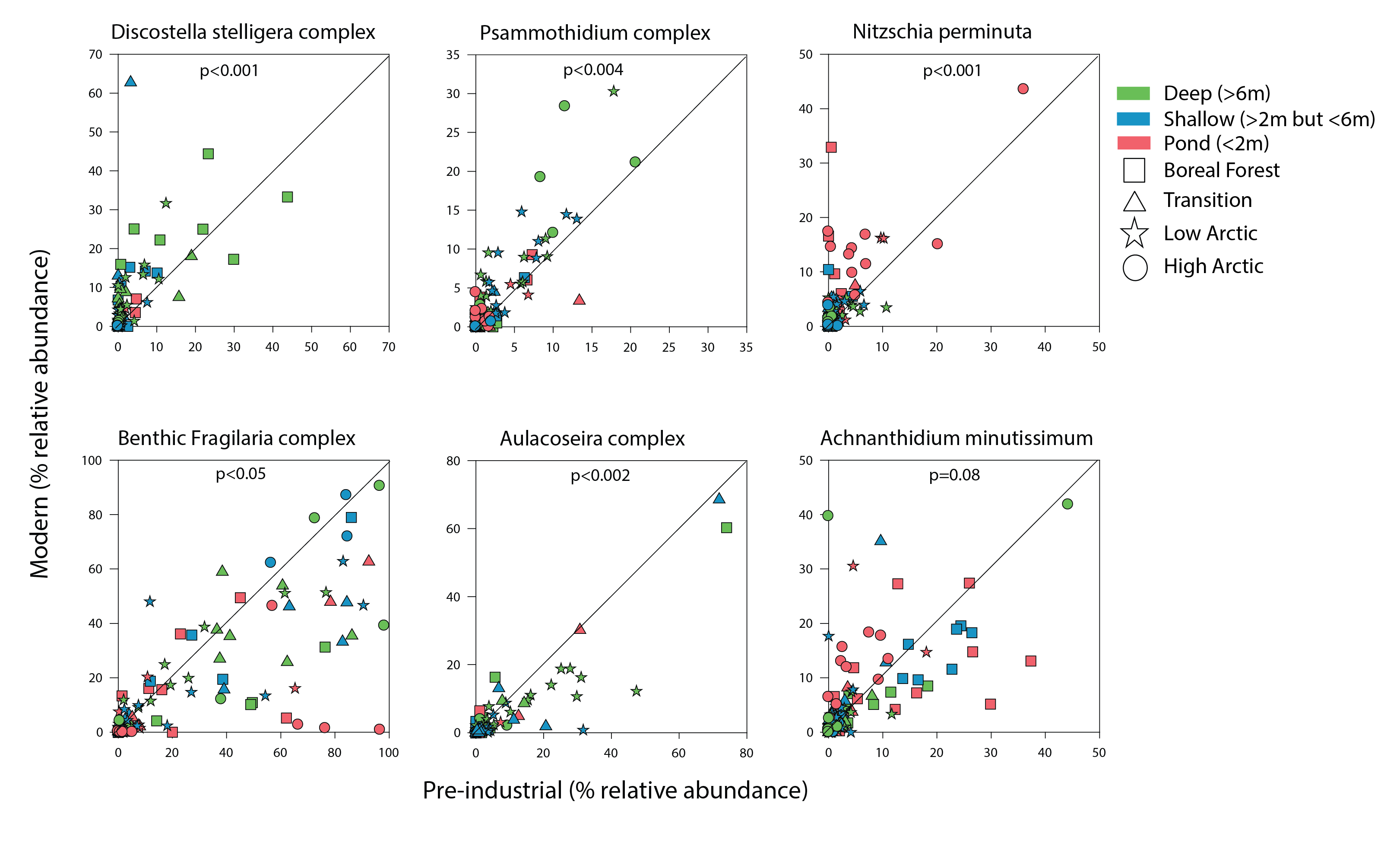
Figure 4 15 Comparison of the relative abundance of select diatom taxonomic groups between core bottoms (pre-industrial sediments; x- axis) and core tops (modern sediments; y-axis) with a 1:1 line to indicate whether there were higher abundances in fossil samples (below red line) or modern samples (above red line). State of the Arctic Freshwater Biodiversity Report - Chapter 2 - Page 15 - Figure 2-1
-
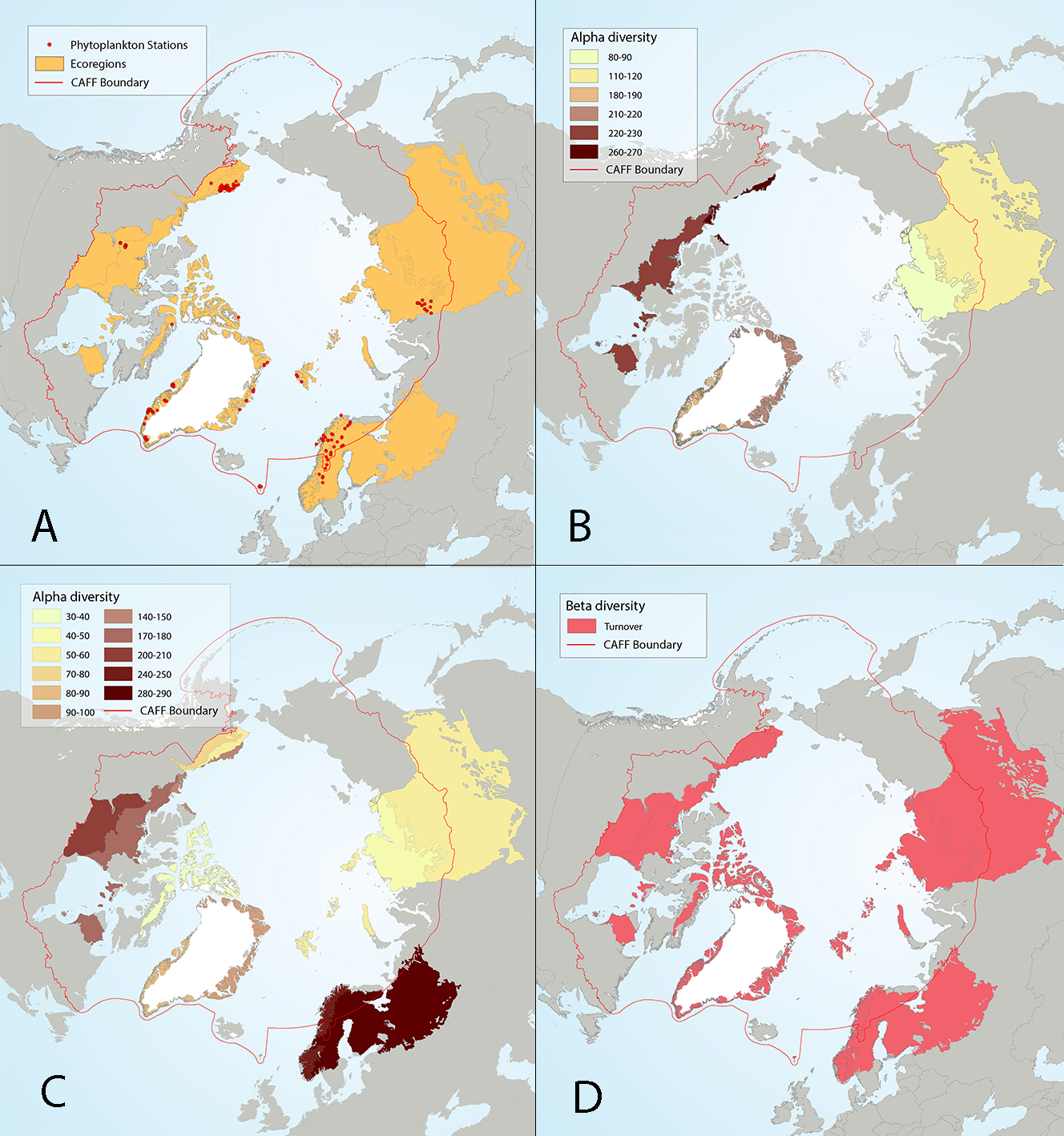
Figure 4 17 Results of circumpolar assessment of lake phytoplankton,(a) the location of phytoplankton stations, underlain by circumpolar ecoregions; (b) ecoregions with many phytoplankton stations, colored on the basis of alpha diversity rarefied to 35 stations; (c) all ecoregions with phytoplankton stations, colored on the basis of alpha diversity rarefied to 10 stations; (d) ecoregions with at least two stations in a hydrobasin, colored on the basis of the dominant component of beta diversity (species turnover, nestedness, approximately equal contribution, or no diversity) when averaged across hydrobasins in each ecoregion. State of the Arctic Freshwater Biodiversity Report - Chapter 4 - Page 56 - Figure 4-17
-
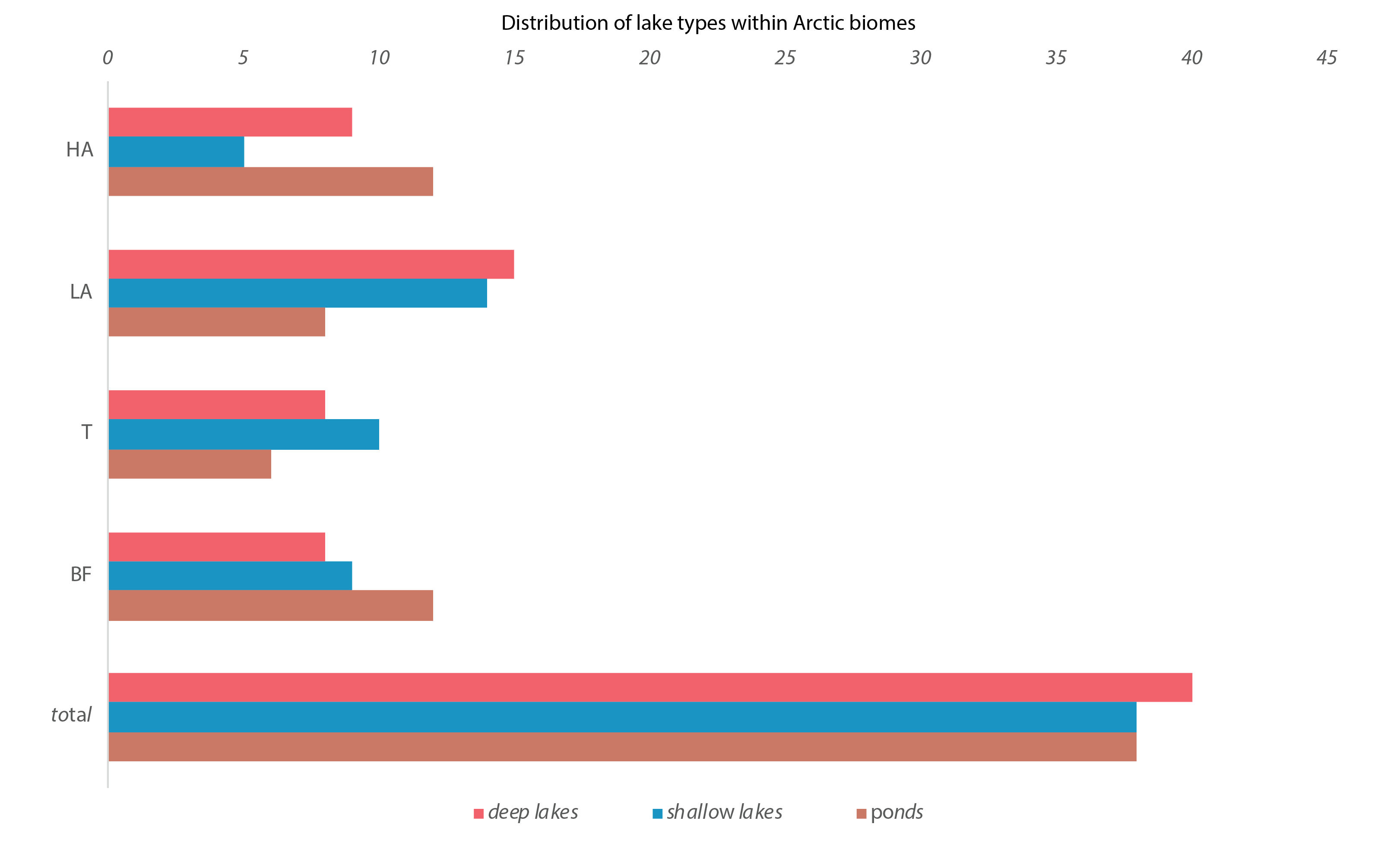
Figure 4-13 Number of deep lakes (red), shallow lakes (blue), and ponds (brown) in each geographical zone (BF, T, LA, HA). BF = Boreal Forest, T =Transition Zone, LA = Low Arctic, HA = High Arctic. State of the Arctic Freshwater Biodiversity Report - Chapter 4 - Page 40 - Figure 4-13
-

Maximum LTA (long-term average) August air temperatures for the circumpolar region, with ecoregions used in the analysis of the SAFBR outlined in black. Source for temperature layer: Fick and Hijmans (2017). State of the Arctic Freshwater Biodiversity Report - Chapter 5 - Page 89 - Figure 5-5
-
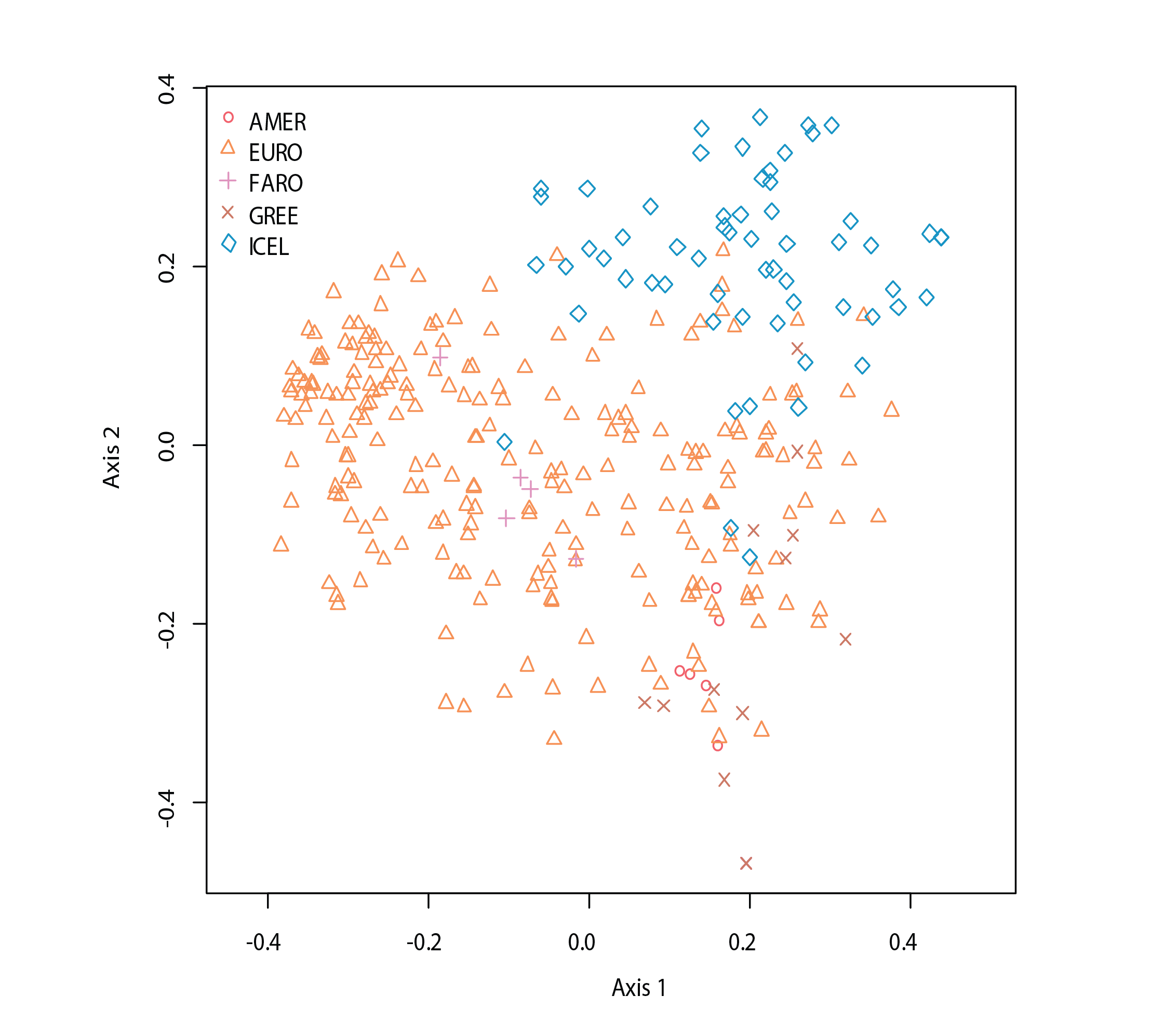
Orgination of macrophyte data (axis labels should be changed from Dim1 to Axis I and from Dim2 to Axis II), with symbols/colours differing by region. State of the Arctic Freshwater Biodiversity Report - Chapter 3 - Page 55 - Figure 4-24
-

Spatial distribution of hillslope thermokarst across the circumpolar area, overlain with ecoregions used in the SAFBR analysis, showing no, low, moderate, and high thermokarst. Source for thermokarst layer: Olefeldt et al. (2016) State of the Arctic Freshwater Biodiversity Report - Chapter 4 - Page 90 - Figure 5-7
-
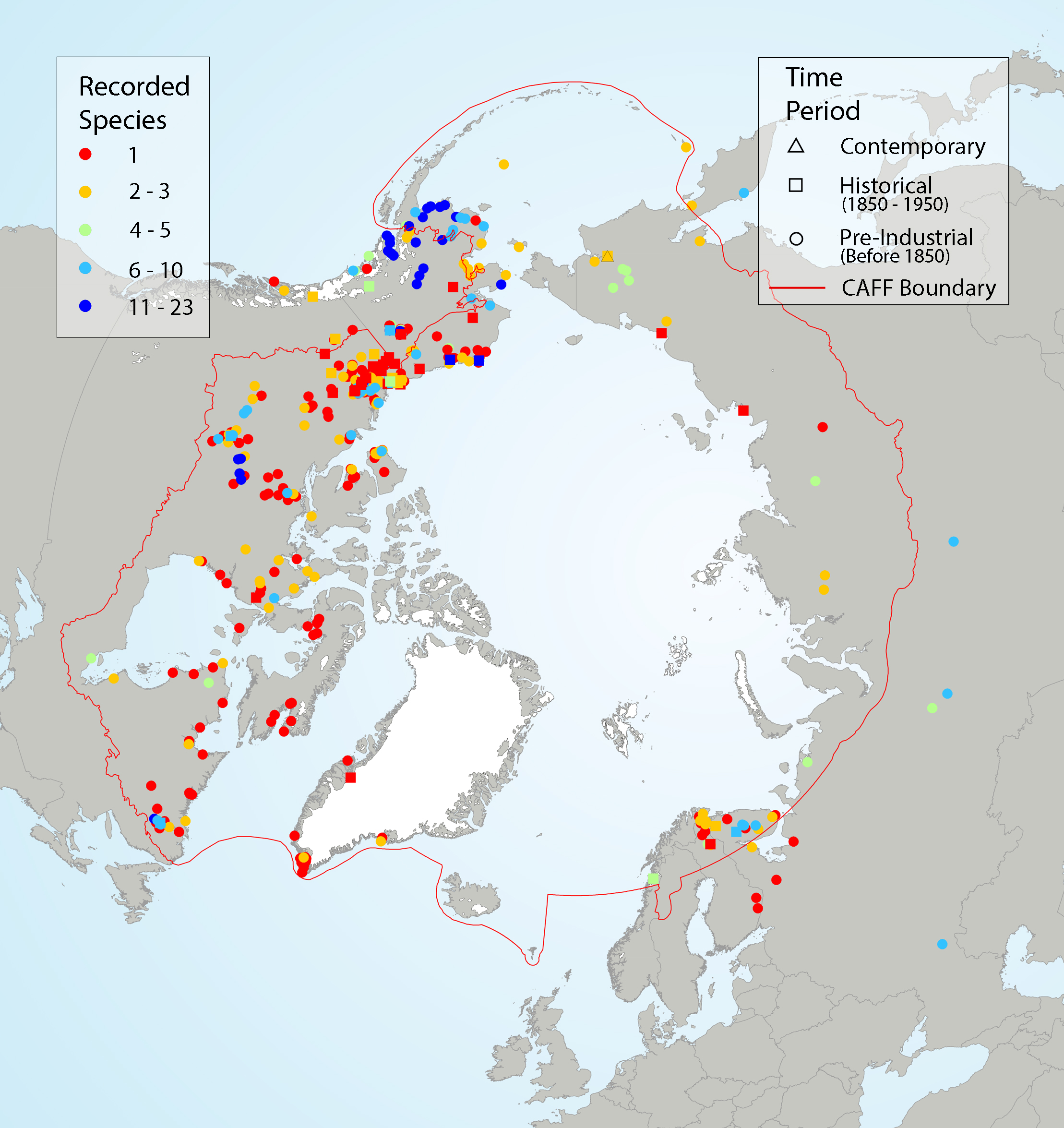
Fish species observations from Traditional Knowledge (TK ) literature, plotted in the approximate geographic location of observed record, with symbol colour indicating the number of fish species recorded and shape indicating the approximate time period of observation. Results are from a systematic literature search of TK sources from Alaska, Canada, Greenland, Fennoscandia, and Russia. State of the Arctic Freshwater Biodiversity Report - Chapter 4 - Page 75- Figure 4-37
 CAFF - Arctic Biodiversity Data Service (ABDS)
CAFF - Arctic Biodiversity Data Service (ABDS)